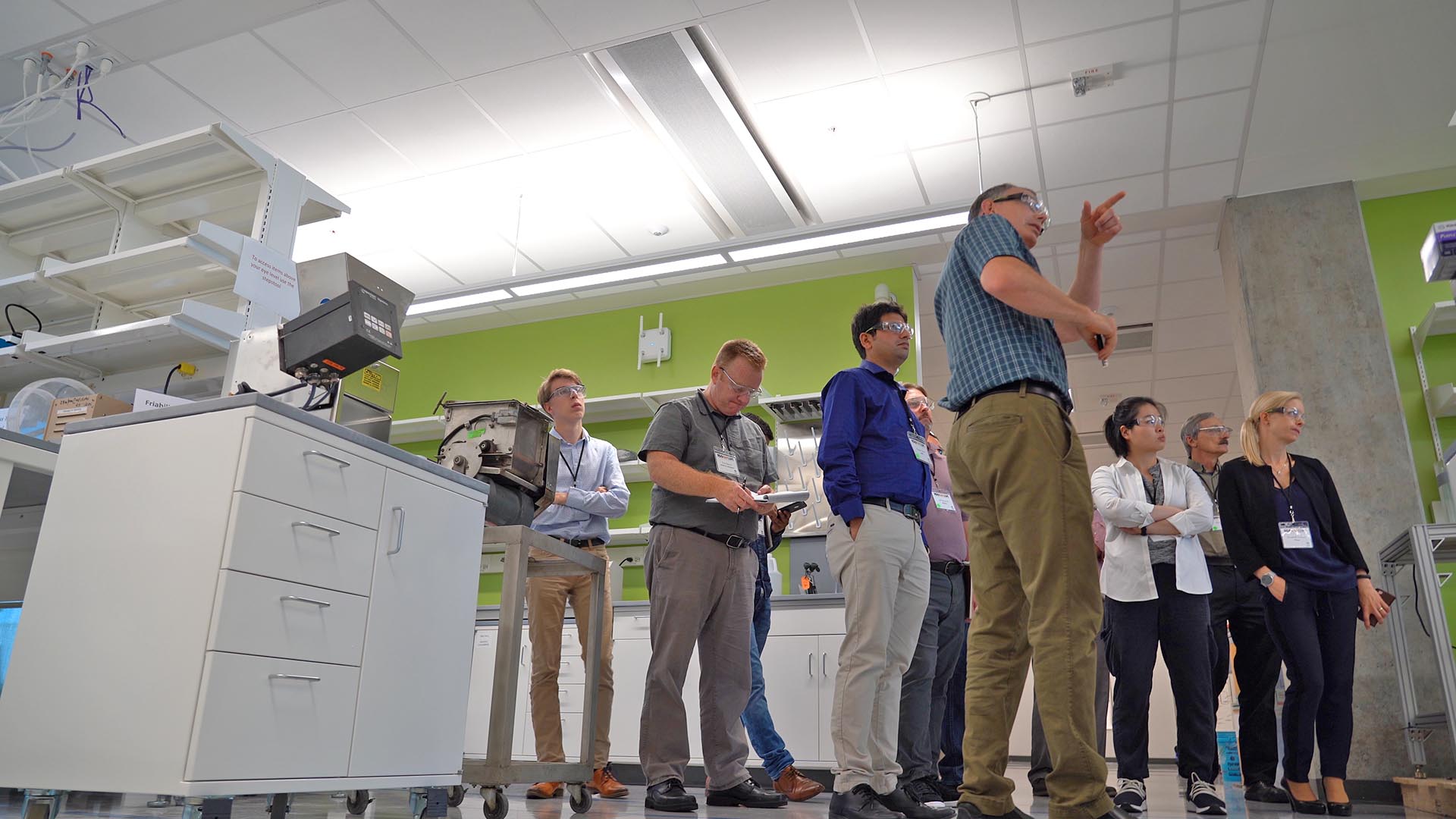Purdue hosts particle conference
“We have a pretty good understanding of solids, liquids, and gases,” says professor Carl Wassgren. “But particles are different. Sometimes they flow like liquids, and sometimes they behave like solids. They can be all different sizes, shapes, and consistencies. We don’t really have good models for predicting the behavior of these materials during manufacturing.”
That’s why Purdue created the Center for Particulate Products and Processes (CP3), a preeminent team led by Wassgren, including members from mechanical engineering, chemical engineering, materials engineering, agriculture, food science, and pharmacy. Their goal is to establish the science behind powders and particles which make up a trillion-dollar market for pharmaceuticals, foodstuffs, and more.
In August 2019, Purdue hosted the first ever Blending and Segregation Forum ("blending" and "segregation" are the combining and separating of particulate ingredients in the manufacturing of products). This event brought together more than 70 industry and academic representatives from North America and Europe, representing such big names as Dow Chemical, Eli Lilly, Proctor & Gamble, and Siemens.
“This is an incredibly complex industry,” says assistant professor Marcial Gonzalez, who chaired the conference. “For example, pharmaceutical companies have to be on the cutting edge of both scientific discovery and manufacturing processes. This is a rare opportunity for all of us who study these different phenomena to get together and discuss the best solutions."

It also presented Purdue the opportunity to showcase its Particle, Powder, and Compact Characterization Laboratory, which is unmatched in academia. “Everything needed to test particles is here,” says Wassgren, who showed off their new space in the Flex Lab building. “We can test particle size, shape, density, flow characteristics, and more. We even have a micro-CT machine that allows us to look at the internal structures of very small materials without breaking them apart.”
Participants also toured Purdue's Continuous Solids Processing Pilot Plant, a complete research-based pharmaceutical manufacturing plant. “This is the complete downstream manufacturing of pharmaceutical tablets,” said Gonzalez. “We start with powders that we mix together at a specific ratio, which get compacted into a continuous ribbon and milled into granules. The granules are then lubricated and fed to a tablet press, which creates thousands of tablets an hour. At every step, we have a variety of sensors that measure the quality and consistency of the product and the process.”
Gonzalez is thrilled with the inaugural event. "It was great to meet colleagues from many different industries," he says "We have a lot of innovations we can share with each other to make all of these products better."
Center for Particulate Products and Processes: https://engineering.purdue.edu/CP3
Writer: Jared Pike, jaredpike@purdue.edu, 765-496-0374
Source: Marcial Gonzalez, marcial-gonzalez@purdue.edu, 765-494-0904
